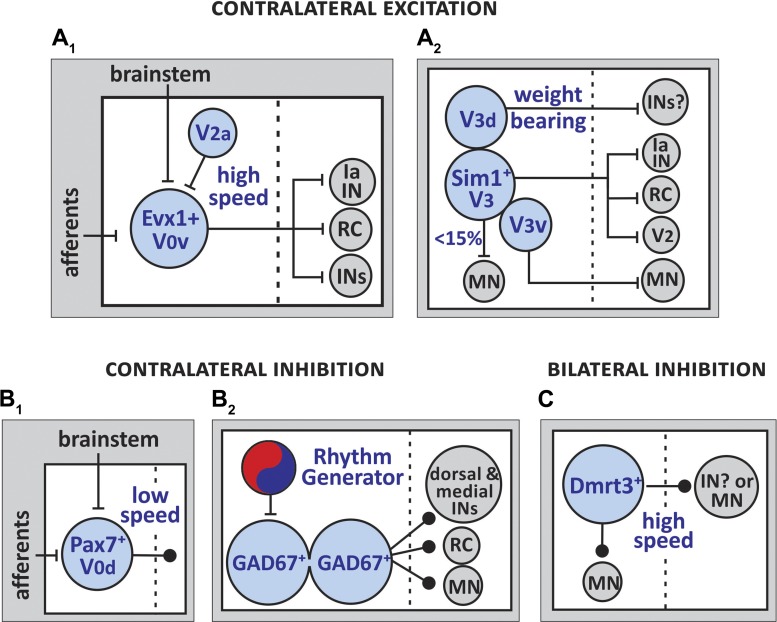Fig. 4.
Schematics of known synaptic inputs and output connections of contralaterally projecting excitatory INs (A), contralaterally projecting inhibitory INs (B), and bilaterally projecting INs (C). A1: V0v INs project contralaterally to innervate Ia INs, RCs, and other INs. The interneurons modulate high-speed left-right alternating motor bouts. A2: the majority of V3 INs project contralaterally to innervate Ia INs and RCs. The subpopulation V3v innervates contralateral MNs and V3d INs synapse onto undefined INs. As a population, V3 INs coordinate left-right alternating motor outputs. B1: V0d inhibitory INs project contralaterally and play a role in low-speed left-right alternating locomotion. B2: GAD67-expressing INs are electrically coupled. They receive synaptic inputs from rhythmogenic neurons and they innervate contralateral MNs, RCs, and INs in the medial and dorsal areas of the spinal cord. C: Dmrt3+ inhibitory INs project to ipsilateral MNs and contralateral INs and/or MNs. The interneurons contribute to the generation of high-speed left-right alternating limb movements.

